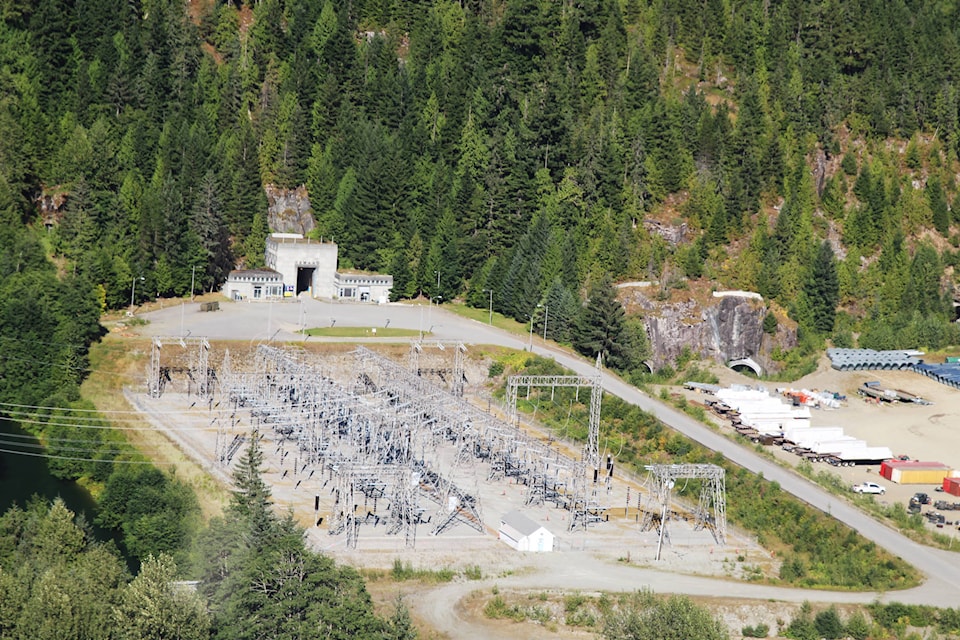Rio Tinto’s Kemano T2 tunnel project will be restarting excavation work in the next few months, after temporarily shutting down due to COVID-19 restrictions.
“Over the past few weeks, contractors have been re-mobilizing to perform maintenance and underground enabling works on site,” Simon Letendre, Rio Tinto’s Director of Media Relations, said in an email. “Last week, we signed a contract with Barnard Constructors of Canada, LP, the new contractor that will take over tunnel boring machine operations. We are targeting a re-start of tunnel excavation works in the third quarter of 2020.”
The contract for the T2 project was originally let to Frontier-Kemper Constructors, Inc. Rio Tinto could not comment at this time why they are no longer working with Frontier-Kemper, and Frontier-Kemper did not respond by publication date.
READ MORE: Tl’ughus is in place and ready to bore
The Kemano T2 is a project that starts at the Kemano Powerhouse hydropower facility, which receives water from the Nechako Reservoir. The facility powers the Rio Tinto BC Works aluminum smelter in Kitimat. Currently, water travels via a single tunnel that is almost 65 years old. The T2 project is a second tunnel, which is being built to help ensure long-term power supply reliability for the aluminum smelter from the Kemano Powerhouse.
READ MORE: Rio Tinto modernized aluminum smelter reaches full production
Construction of the T2 project was put on “care and maintenance” in late March, Letendre said, when the COVID-19 pandemic starting becoming more prominent throughout Canada and North America. The people that remained on-site for the project were those doing maintenance and monitoring to ensure the project stayed in-tact until excavation could continue.
“A skeleton crew including local First Nations workers remained on site for critical work such as operation of water treatment plants, the monitoring of environmental controls as well as road and asset maintenance,” Letendre said. “They were also supported by management, HSE and paramedical teams.”
In terms of COVID-19 safety measures, Letendre said they have been and will continue to follow the advice of the B.C. government and health authorities, which includes maintaining personal hygiene and social distancing restrictions.
“Prior to travel from home, each member of the workforce is required to complete a COVID-19 screening questionnaire. Upon arrival to Terrace/Kitimat, personnel are asked to complete the same screening questionnaire and undergo additional screening administered by Canruss, a medical and safety services firm,” Letendre wrote. “The project has established a travel route that restricts workers’ access to Terrace and Kitimat as much as is practicable. The number of passengers on buses is limited to allow social distancing. Buses are cleaned prior to each trip and hand sanitizer is available on buses.”
As T2 begins gearing back up, Barnard and Rio Tinto will look for opportunities to hire people from local communities and First Nations, while ensuring the most qualified candidates are brought on to meet the need for specific skills, Letendre said.
In February 2020, Rio Tinto BC Works signed a partnership agreement with the Cheslatta Carrier Nation in Burns Lake, and they are one of the groups playing a key role in the T2 project.
“Over the last few months, Cheslatta businesses and partner businesses have helped to maintain the T2 site and ensure the project is ready for the restart of excavation work,” Letendre wrote.
When the project first began in 2018, Cheslatta businesses employed four people. Today there are up to fifty people employed on the project. This includes Cheslatta Carrier Nation, Lake Babine First Nation, Burns Lake Band, and Nee Tahi Buhn Band members and non-First Nation members.
The primary function of the Cheslatta businesses in Kemano is taking care of site services including camp maintenance, grounds keeping, shuttling employees, warehousing, logistics, waste management and recycling.
“This project has groomed us for bigger things, we’ve had valuable guidance from Rio Tinto and working together has made us excited to take on bigger contracts,”James Rakochy, Resource Manager for the Cheslatta Carrier Nation, said. “It’s been rewarding for our members and business to grow, be given responsibilities and prove ourselves time and again.”
For more information about working on the Kemano T2 tunnel project, email t2projectinfo@riotinto.com for positions and contracts, or visit Rio Tinto’s website for more information on the T2 project, itself.
clare.rayment@northernsentinel.com
Like us on Facebook and follow us on Twitter
